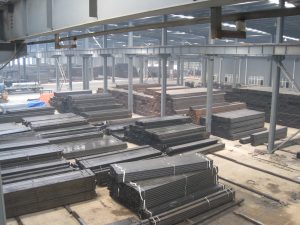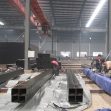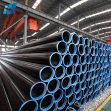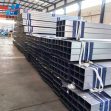Control the output of crude steel
First of all, China’s crude steel output accounts for more than half of the world’s total output, iron ore dependence is high, and the industrial concentration is low. Under the oligopoly of the global iron ore market, we lack pricing power over upstream raw materials, and the profit of spiral steel pipe manufacturing is easy to be eroded by the rising cost of raw materials. It is not worth the gain, nor can it achieve high-quality development.

Secondly, the related external need magnified our demand for iron ore raw material. This external demand includes both direct demand for steel products (such as crude steel) and indirect export of steel-intensive industrial products (such as mechanical and electrical equipment, household appliances, etc.). In particular, the export of some iron and steel primary processing products has intensified the contradiction between supply and demand of raw materials such as iron ore. Since there is a high degree of dependency in the aspect of iron ore, the imported iron ore should give priority to the production of iron and steel products to satisfy the domestic market needs of zinc coated steel pipe. On the other hand, paying high prices to import iron ore to produce crude steel products for foreign countries is even more contrary to the requirements of high-quality development, while the profits are taken by overseas mines while the emissions are kept at home. Earlier, the country raised the export tariff of ferrochrome, high purity pig iron, and cancelled the export tax rebate of some steel products, is reflected in this policy orientation.
Third, in the context of “two-carbon”, the steel industry has set a target of achieving a carbon peak by 2025 and a 30 per cent reduction in emissions from the peak by 2030. Therefore, in addition to developing low carbon metallurgy technology, controlling crude steel output is also an effective way to achieve low carbon emission reduction.
In the subsequent work of crude steel output reduction, our country faces great challenges and makes great efforts. Due to the unsatisfactory situation of overseas epidemic prevention and control, some overseas manufacturing orders returned to China, and domestic and foreign demand for steel products like Gi square steel pipe increased significantly. By June last year, crude steel production was still in a significant growth state, so the pressure of crude steel production reduction was concentrated in the second half of the year. First, through the strict implementation of the “dual control” policy, with strict energy constraints to restrain output expansion; The second is to regulate the external demand of metal pipe by adjusting the export tariff policy and reduce the production expansion impulse of iron and steel enterprises by demand-side management. The third is to stabilize the cost of raw materials through the supply and price policy; Fourth, through the cash market circulation order and futures market capital speculation behavior to rectify. A series of policy combination punch, last November crude steel production fell year-on-year. It can be said that the results of crude steel reduction are hard-won.
Tel: +86 18202256900 Email: steel@fwssteel.com










